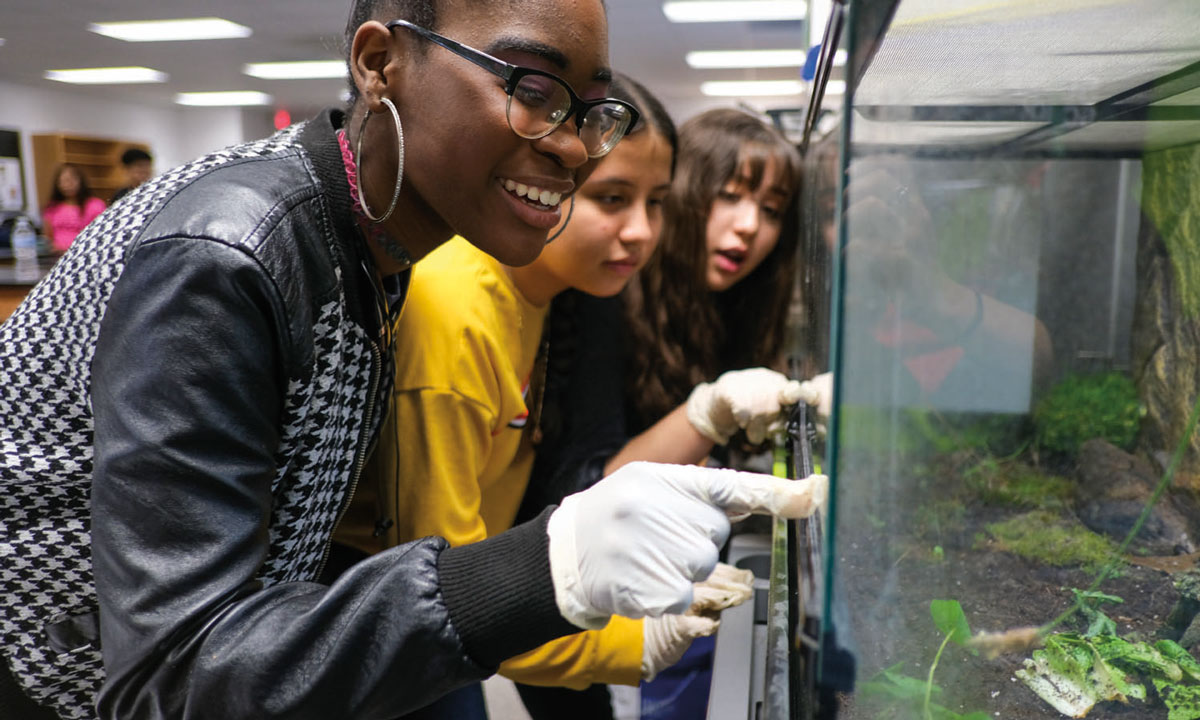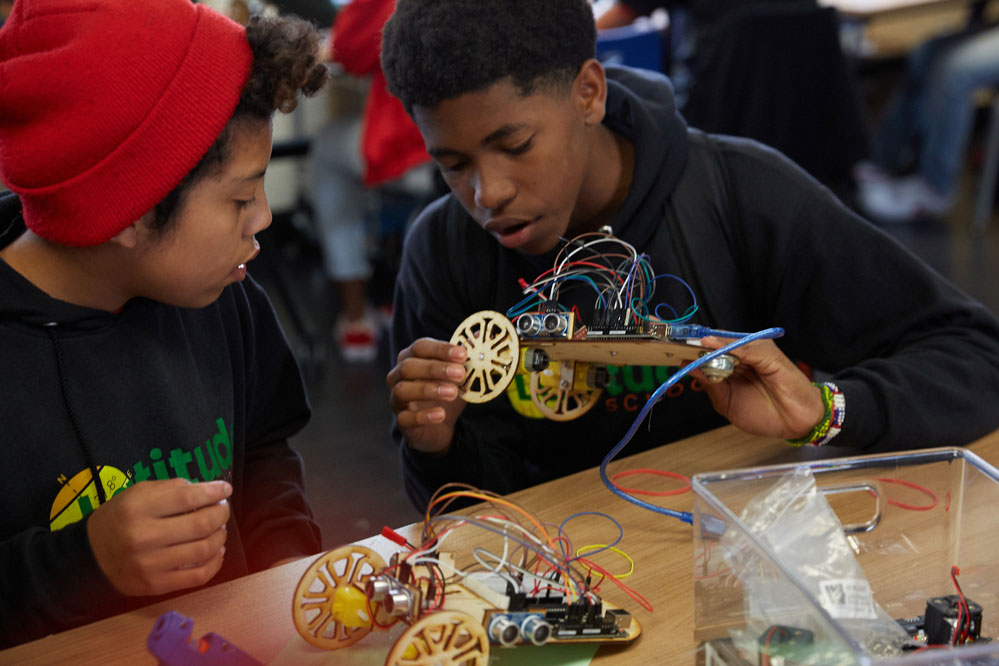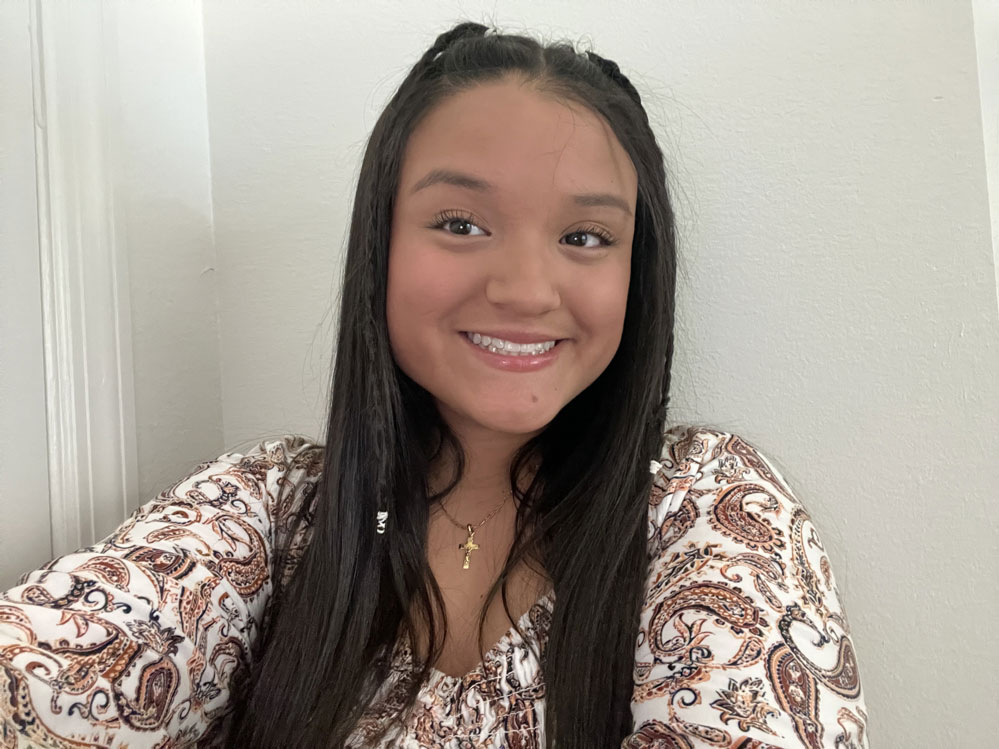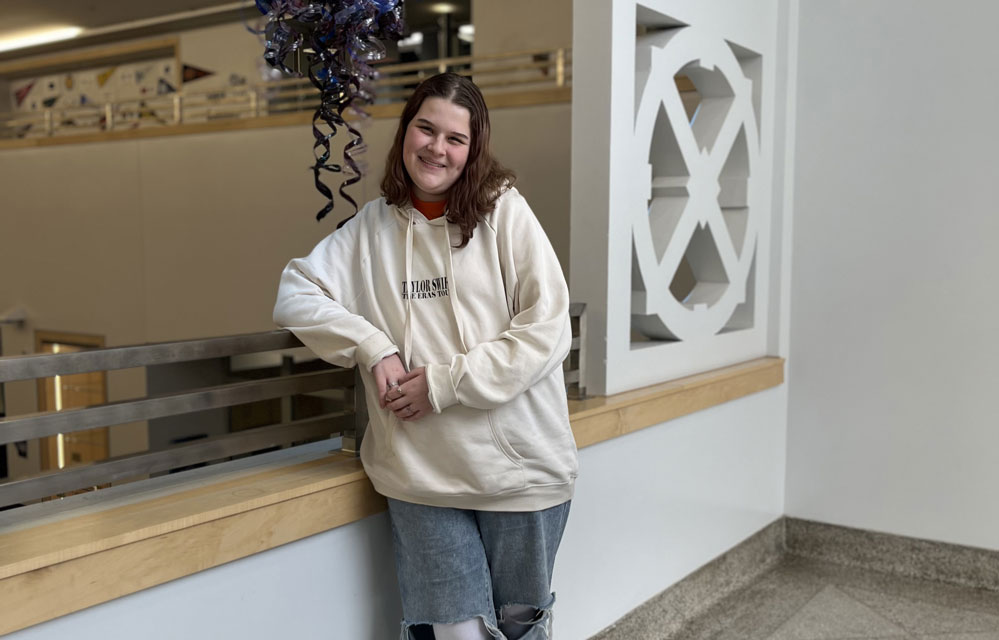6 Tips for Spotting a High School That Best Prepares Teens for Their Futures
Here’s how to ensure your high schoolers get engaging, rigorous learning experiences to keep up with the changing world.

Get stories like these delivered straight to your inbox. Sign up for The 74 Newsletter
High schools aren’t just learning factories that isolate students for about seven hours a day to earn a diploma. They’re part of our communities, educating students from a variety of different cultures and neighborhoods. The awkward teens you see joking with each other in your local stores or playfully wrestling at bus stops all have hopes and dreams for their futures.
But they can’t succeed if they aren’t treated like part of a greater community. This is why XQ believes high schools deserve more attention and support to fully prepare every student for college, career or whatever comes next. Since 2017, we’ve been working with dozens of schools and systems around the country to help high schools and their communities design learning experiences more suited to the 21st century — for example, by encouraging partnerships with local organizations so young people can see how their academics show up in real life.
That’s how classes work at Crosstown High, the subject of a new documentary. “The First Class,” directed by Lee Hirsch (of “Bully”), follows students from ninth grade to graduation at this innovative Memphis public high school as they figure out how to sustain life on Mars and interview refugees for an interdisciplinary project combining history and English.
Community partnerships are among six research-backed Design Principles XQ developed for high schools to create engaging and rigorous learning opportunities. Like the XQ Learner Outcomes, which we also introduced, these design principles were originally created for educators and communities involved in building or redesigning a school. But they are also very useful for parents and students who want to better understand whether their local high school is serving students as well as it can. Below are some questions to ask when visiting a school.
Educators interested in a detailed approach to the Design Principles can download XQ’s Design Principles Rubric, a tool designed to gather and assess evidence about where they are on their journey to becoming the best high school they can be.
1. Are there high expectations and equal opportunities for all students, regardless of income level, race, ethnic group and special needs? Do the AP and honors classes resemble a cross-section of the community?
These are signs of a Strong Mission and Culture, a set of unifying values and principles that give a school a sense of common purpose and a fundamental belief in the potential of every student to achieve great things. Elizabethton High School in Tennessee, for example, is committed to making students feel invested in their community. That investment shone through when one sociology class solved a murder, now the subject of a podcast series. When visiting a high school, it’s also worth checking whether there are opportunities for dual enrollment in postsecondary courses, which can benefit all students.
2. Does the school use an interdisciplinary curriculum — do teachers combine subjects like math, science, English and electives? Can students and teachers dive deep into topics with project-based learning?
These are examples of Meaningful, Engaged Learning. Research tells us that young people learn through the combination of what they encounter as learners, through curriculum, relationships, challenges and supports; what they do as learners, through their active commitment in producing and persevering; and how they make meaning of those experiences. Our schools can offer much more powerful ways of learning. For example, students built a hydroponic system through a science project at Purdue Polytechnic High School in Indiana. They conducted extensive research as they designed and constructed a method for growing produce sustainably and cost-effectively.

3. Does the school ensure all students have at least one adult who knows them well enough to provide academic and social support? Is there a system in place that helps students connect and check in with the adults so they feel safe, valued and seen?
Those are hallmarks of Caring, Trusting Relationships. The science of adolescent learning shows that learning is a social process, particularly during the high school years, and this aspect — when intentionally addressed — can result in a transformative high school experience. Schools that emphasize getting to know students, inside and beyond the school walls, set a foundation for trust that carries over into academic work. At Latitude High School in Oakland, California, co-founder Christian Martinez takes pride in building a place where the goal is to never let a teen slip through the cracks like he did at their age. During the college process, for example, staff guide and support students at every step, from having highly personal conversations about their choices to ensuring that they submit their applications on time.
Want to learn how to create innovative high school experiences like those at Crosstown High? Check out The XQ Xtra, a newsletter for educators that comes out twice a month. Sign up here.
4. Does the high school support students to build their sense of agency and autonomy, and explore postsecondary goals?
Schools need to provide Youth Voice and Choice. A student-centered school gives students a say in their learning. They can choose projects and topics and decide whether to present their knowledge as a research paper, slide show or even a documentary or podcast. Staff members should foster this environment, not feel threatened. The D.C. Public Schools recently published a booklet on the value of student voice. It argues that student engagement is crucial when communities come together to redesign local high schools, as in the DC+XQ partnership, because students have higher attendance and learning outcomes when they’re treated as partners in their own education.

5. Is the school partnering with local entities such as cultural institutions, businesses, nonprofit organizations, colleges and universities and health and service providers?
These Community Partnerships can take many forms. But at their heart, these powerful relationships create opportunities for learners to explore and envision their future and set goals toward making it real. At Florida’s PSI High in Seminole County Public Schools, students have numerous opportunities to work with outside organizations and leave the campus. Some of that activity slowed down during the pandemic — especially for those who are now seniors.
Members of the class of 2024 wanted more outside experiences before graduating. They devised a plan: a trip later this spring to New Smyrna Beach, more than an hour away. But it’s not just a day at the beach, said one of the organizers, Daniella Muñoz. The students researched local nonprofits and got excited about NSB Turtle Trackers. They’re planning a visit that includes a talk with an expert because it’s important “to hear from someone who isn’t a teacher” about “a real-world problem,” Muñoz said. They also plan to clean the beach, using gloves and other supplies provided by the environmental group.
6. Does the school review, reflect on and make decisions based on data that ensure inclusion and access to advanced courses? Does it use data to eliminate disproportionate remediation, disciplinary practices and other inequities?
Data is just one aspect of a high school that makes Smart Use of Time, Space, and Tech. Another example is breaking away from the traditional schedule of six or seven single-subject periods, each about 50 minutes long.
The Grand Rapids Public Museum School in Michigan has an agreement with its district so students and teachers can easily visit local nonprofit groups and businesses and take classes at other schools and colleges. Junior Kate Ruel says she’s getting science credit this year for taking culinary courses at Kent Career and Tech Center. She also enjoyed visiting Dwelling Place, which provides support services and affordable housing, during a ninth-grade project on English, history, social studies, and science.
“I found it really interesting and cool,” she said. “I was able to go out and talk to people.”
Surveys show students at GRPMS feel connected to their learning, and they’re doing better than their counterparts in the state and city on many measures.

This flexibility is why we argue high schools need a new “architecture” for learning without the Carnegie Unit, a century-old system that equates time with learning. When students and teachers are freed from earning credits based on seat time in single-subject classes, they can see how academic content is connected to the world around them and gain a fuller appreciation of what they’re learning. These experiences are important for teens in so many ways beyond school. Today’s high school students are the leaders, workers, doctors, inventors and teachers of tomorrow.
Disclosure: The XQ Institute is a financial supporter of The 74.
Get stories like these delivered straight to your inbox. Sign up for The 74 Newsletter

